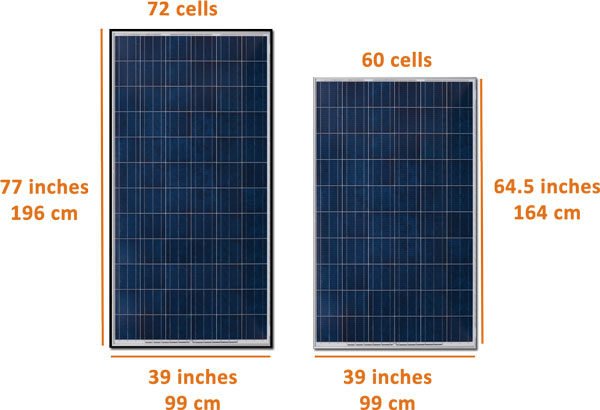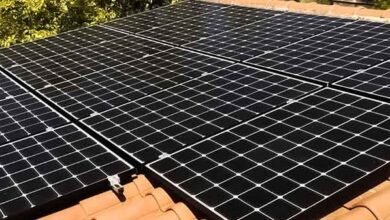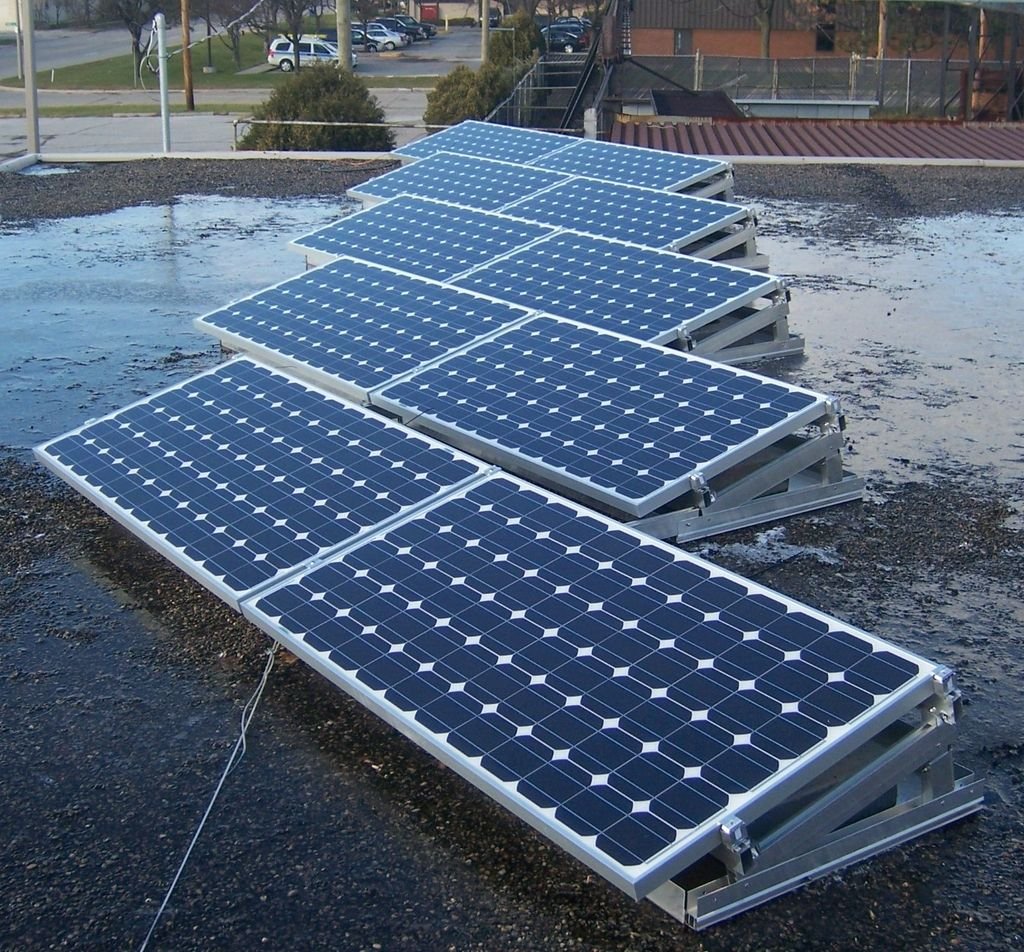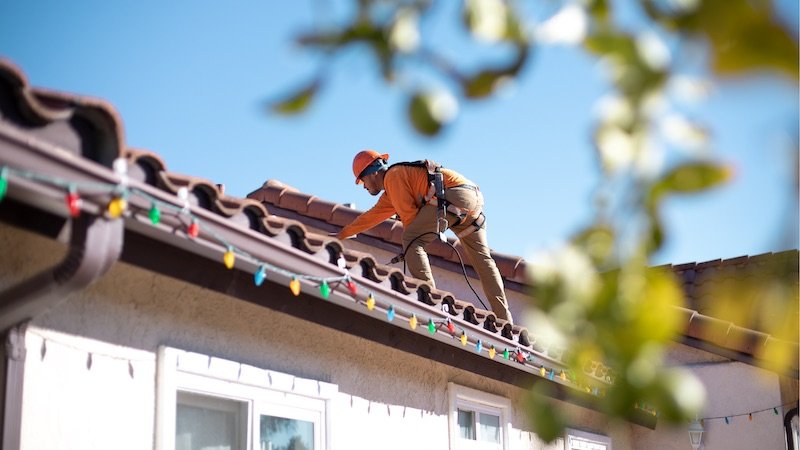
SOLAR PANEL SIZE: standard measures
In this article, we will look at SOLAR PANEL SIZE. Before we begin, we must mention that we will cover the dimensions in both senses of the word: from the point of view of the power capacity (as in the 200 watt panels), as well as the physical size of the panels.
Cells, panels and matrices
Let’s take a moment to analyze the difference between solar cells, panels and arrays.
The basic unit of all solar panels is a solar cell. The solar cells are connected in series in a solar panel and the solar panels are connected to form a matrix.
For residential applications, the industry standard is 60 solar cells per panel. A typical solar cell supplies 0.5V, so each panel provides between 30 and 45V.
How do i know how much solar energy i need?
Sizing your residential electric solar system is about determining the correct solar system for your home.
Are you interested in reducing your energy bill, neutralizing it or generating excess energy to sell to the grid?
Each option will involve a different size of the solar panel system. One of the first steps in system sizing is to achieve good energy management.
A quick look at your monthly bill will show you the average energy consumption in kWh (utilities can provide you with average daily or monthly data).
Let’s say your monthly consumption is 500 kWh and your home is located in Denver, CO. The question now is what size of the system will be needed to match this level of consumption.
Converting the total energy target we have in kWh to the required power in kW takes some math.
There are tools that with just a few clicks can determine the size of the system required for your home. Denver, with a solar score of 62, has ample solar radiation to reach the 500 kWh goal. Bingo!
A system size of around 4 kW will generate around 6,000 kWh per year, or 500 kWh per month on average.
However, it is important to keep in mind that this is only an average monthly figure. Some months it will generate and / or consume more than its average consumption of 500 kWh and some months less.
Keeping connected to the grid will help balance consumption and solar power generation on an annual basis.
Now that we know our target size of 4 kW, the next step is to determine how many solar panels we need.
Most of the solar panels used for residential rooftop installations are in the power range of 230 – 300W DC.
However, some manufacturers, such as Sanyo and SunPower, offer more efficient solar panels that can deliver up to 345W DC for the same physical size.
Note that DC output values are based on laboratory conditions (also called standard test conditions), when panels are outdoors and exposed to elements with varying solar radiation conditions, the output levels may be slightly below the quantities announced.
So how many panels will you need for a 4 kW system? For example, if you are using the 250W monocrystalline panels manufactured by RENOGY, you need a total of 16 solar panels (4 kW / 0.25 kW).
What are the dimensions of the residential solar panels?
(Height, width and depth)
A commercial solar panel (left), compared to a residential solar panel (right).
In addition to the energy needs used to determine the number of solar panels, the physical dimensions must also be considered.
If the quality and price are correct, you can definitely choose a less efficient solar panel brand, however, you will likely need to purchase more units to achieve the same target size system.
To determine the exact number of roof panels and their configuration, installers carry out detailed calculations.
But you can have a good idea if you can combine the system size information we discussed earlier with the physical dimensions of the panels you are interested in.
Most solar panels designed for residential use are 65 inches tall and 39 inches wide. The depth of typical solar panels ranges from 1.4 inches to 1.8 inches.

All these solar cells, the glass shell and lid can weigh a lot: the weight distribution of the solar panels is about 0.90-1.81kg per 0.092 square meters (not very light, but easily within the safety limits of most of the roofs).
Let’s take a look at an example to better understand how all these numbers relate to each other.
The above-mentioned RENOGY panels have a module size of 161.25cm by 97.5cm.
The weight is 19.05 kg, which translates into a pressure of 1.043 kg per 0.092 square meters, so that most roofs should have no problem accommodating the panels and shelving system.
Even though the total area of the 16 panels for our 4 kW system is about 26.01 square meters, the actual area that is needed in your roof will be a bit bigger as we have to take space into consideration. between the panels, necessary for assembly.
Typically solar installers perform a detailed structural assessment of their roof to ensure that the design is optimized for the available space and that the overall weight of the system is evenly distributed across the roof.
A quick look at the commercial panels
Commercial panels have slightly different physical size and power ranges than residential ones.
Commercial panels are manufactured using a greater number of solar cells (up to 96 per panel) and, therefore, are higher.
Typical dimensions are 192.5 cm by 97.5 cm. The installation method used for commercial panels is very different from that of residential panels.
Since commercial projects are much larger, hundreds of panels are typically required.
Most commercial properties have flat roofs, so non-penetrable ballast supports are preferred.
This technique is less invasive than screwing the racks to the roof surface and also saves several weeks in installation time.
For residential installations, installers can rarely use ballasts to secure the panels as most residential buildings have sloped ceilings.
The most diverse class of panels: portable solar
When it comes to portable solar panels, it’s really hard to talk about a typical size.
These tend to come in a wide range of sizes. The power capacity of portable panels is generally less than the capacity of their residential and commercial cousins.
Cell efficiency is also lower. As a result, the amount of energy that can be generated by portable panels is typically considerably less than in rooftop installations.
Portable panels can be used without an inverter to charge most USB and 12V devices, such as cell phones, GPS units, music players, etc.
For example, the Goal Zero Nomad 7 unit can only generate 7 watts of power.
solar panel size, its dimensions are 16.25 x 23.75 x 2.5cm and it weighs only 0.45kg.
A 7-watt capacity is negligible compared to the 250-watt residential panels discussed earlier, but if all you need is the ignition to charge mobile devices, that might be all it takes.
We have to keep in mind that portable doesn’t always mean small. The 600-watt indoor and outdoor solar power system manufactured by Sainty International measures 120 × 100 x 77.5cm and weighs over 68.04kg.
Of course, this unit can do more than just charge portable electronic devices.
So, would you like to know the standard dimensions of a solar panel?
While many PV modules on the market in Sydney will be the same size (if they come from the same manufacturer), there are subtle differences in size between modules made by different solar companies.
However, in general, there are two “approximate” module sizes
Monocriststallino 175 Watt – 195 Watt
With the exception of the sharp modules, most 180W sub panels have the dimensions of 1600mm x 800mm, and this is related to the fact that they are generally made up of 72 cells with similar areas and connection points.
The thickness of the frame varies from 35 mm (Suntech, Sanyo HIT) to 50 mm (BP Solar, Schott, Sanyo MP6).
Polycrystalline panels ~ 230W
These panels tend to be wider than mono panels, although there are also some mono panels in this format, such as the Conergy PowerPlus 230M. The overall size is 1600mm x 1020mm.






